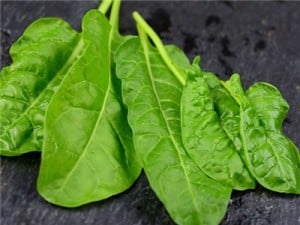February is the time to give cool-season vegetables a jumpstart by sowing seeds in a greenhouse. You could also put seed trays under lights in a frost-free garage or a back porch, or even on a sunny windowsill that’s not too warm. In addition to the traditional ones—cabbage, broccoli, peas, lettuce, and cauliflower—it’s worth considering some more unusual choices.
This month I asked Rose Marie Nichols McGee, owner of Nichols Garden Nursery in Albany, Oregon, to tell me about her favorites. Rose Marie is a seed purveyor and a fabulous cook and her catalog reflects that. She connects the garden to the plate.
Here are a few ideas to enliven your eating this spring. “These are hard to find in most supermarkets,” Rose Marie tells me, “but all are easy to grow.”

Arugula –Two different kinds bear the common name arugula, Rose Marie says. Summer arugula (Diplotaxis tenuifolia) won’t bolt in hot weather. But for cooler conditions right now, she recommends rocket (Eruca sativa). “It’s the traditional rocket, much more productive,” she says. “You can cut it again and again. And if you have too much at any one time, chop it up and toss it last minute into a hot tomato sauce over pasta.”
Perpetual Spinach – “This is a much underutilized spinach beet (Beta vulgaris var. cicla),” Rose Marie says. “It doesn’t form a beet, but you can cut and cut the foliage and it keeps producing for months. It’s an intermediate, between beet and Swiss chard, but no midrib like chard.”
Radish – A wide array of radishes can be greenhouse-grown in trays or any other six-inch deep container. Rose Marie suggests the French Breakfast radish. She describes it as, “The length of a guy’s thumb, white on the base. In parts of France, people slice them thin on buttered bread.”

Parsley – Like many edibles, home-grown parsley is simply superior to store-bought. “I like to rim the edges of many containers with parsley. The repetition will unify the look of your growing space,” Rose Marie suggests. Which is better—curly or flat? “Either one,” she laughs. “In a blind taste test, chefs couldn’t tell the difference.” She likes Forest Green, because of the intense color.
Peppers – In February? Peppers are a summertime staple, but an early start in a cool greenhouse allows these plants to grow healthy and stocky, which means they won’t be shocked later when transplanted outside. Germinate using a heat mat, Rose Marie says, but “once they’ve sprouted their first set of leaves, they don’t need heat.”


